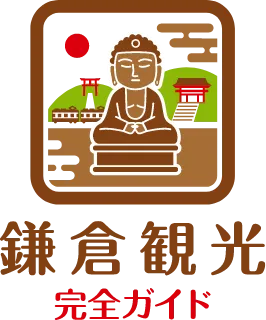Autumn Leaves at Egara Tenjin Shrine (荏柄天神社)
Discover the Autumn Leaves at Egara Tenjin Shrine (荏柄天神社)
Nestled in a quiet valley slightly apart from central Kamakura, Egara Tenjin Shrine enshrines Sugawara no Michizane (菅原道真公), the deity of learning. When autumn deepens, visitors are greeted by a massive ginkgo tree—said to be over 900 years old—and maple trees that frame it in a brilliant display of gold and crimson. The contrast between the red shrine buildings and the vivid leaves creates a serene yet breathtaking late-autumn landscape unique to this sacred place.
When Is the Best Time to Visit?
The maples reach their peak slightly after the great ginkgo turns golden. The best time to visit is usually from mid to late December, with some years showing vivid red leaves even around Christmas. Rainy or cloudy days enhance the colors, as the wet leaves glow more deeply, adding to the shrine’s tranquil beauty.
Photo Highlights and Must-See Spots
Though few in number, the maples in the precincts stand in poetic locations. The most popular angle is capturing the red shrine in the background framed by crimson leaves—a perfect representation of Kamakura’s autumn charm. Visit when both the golden ginkgo and red maples overlap for a striking golden-red contrast. Photographers will also enjoy early morning or late afternoon light, when gentle rays filter through the trees.
Embrace the Quiet Hours of Morning
In contrast to the busier daytime, mornings and evenings offer a stillness that feels almost timeless. The sound of rustling leaves, birdsong, and sunlight filtering through the trees create a moment of quiet reflection. Guests staying at Tosh’s Place (トシズプレイス) can easily visit before or after breakfast, enjoying a peaceful walk and deep connection with nature thanks to the flexibility of a kitchen-equipped stay.
How to Get There from Tosh’s Place (トシズプレイス)
Egara Tenjin Shrine is about a 20-minute walk from Kamakura Station, along calm residential streets and a small valley path. It’s also within walking distance from Tosh’s Place, making it ideal for a morning stroll or evening walk. Nearby spots such as Kamakura-gu Shrine (鎌倉宮) and Zuisen-ji Temple (瑞泉寺) can be added to your route for a richer autumn experience.
Wrap-Up: Autumn Colors and a Local Way to Experience Kamakura
The autumn leaves at Egara Tenjin Shrine embody Kamakura’s quiet, reflective charm. Here, history and nature meet to create not just a sight, but an experience that touches the soul. Staying at Tosh’s Place allows travelers to enjoy these peaceful moments away from the crowds—discovering the sacred serenity of Kamakura in its most golden season.
Toshi’s Evaluation (2025)
| Criteria | Score | Reason |
|---|---|---|
| Scenery | 9 | The 900-year-old ginkgo tree turns an impressive golden color in fall, contrasting beautifully with historic shrine buildings. Maple colors are less prominent, but the overall appearance is photogenic and harmonious. |
| Accessibility | 8 | Easy access by bus from Kamakura Station, with clear signs. Not ideal for walking from the station, but very manageable for most visitors. |
| Historical Value | 10 | One of Japan’s three major Tenjin shrines, founded in 1104 and deeply connected to Kamakura culture and tradition. |
| Comfort & Crowding | 7 | Can be bustling with exam-wishers in autumn (Tenjin’s feast season), but open grounds, benches, and toilets generally provide comfort. |
| Reviews | 7 | Google rating averages around 4.3—favorable overall, but online buzz for fall foliage is modest as most post about plum blossoms and academic prayers instead. |
Total Score: 41 Points
This total represents an overall assessment of the shrine’s autumn appeal for international visitors.
